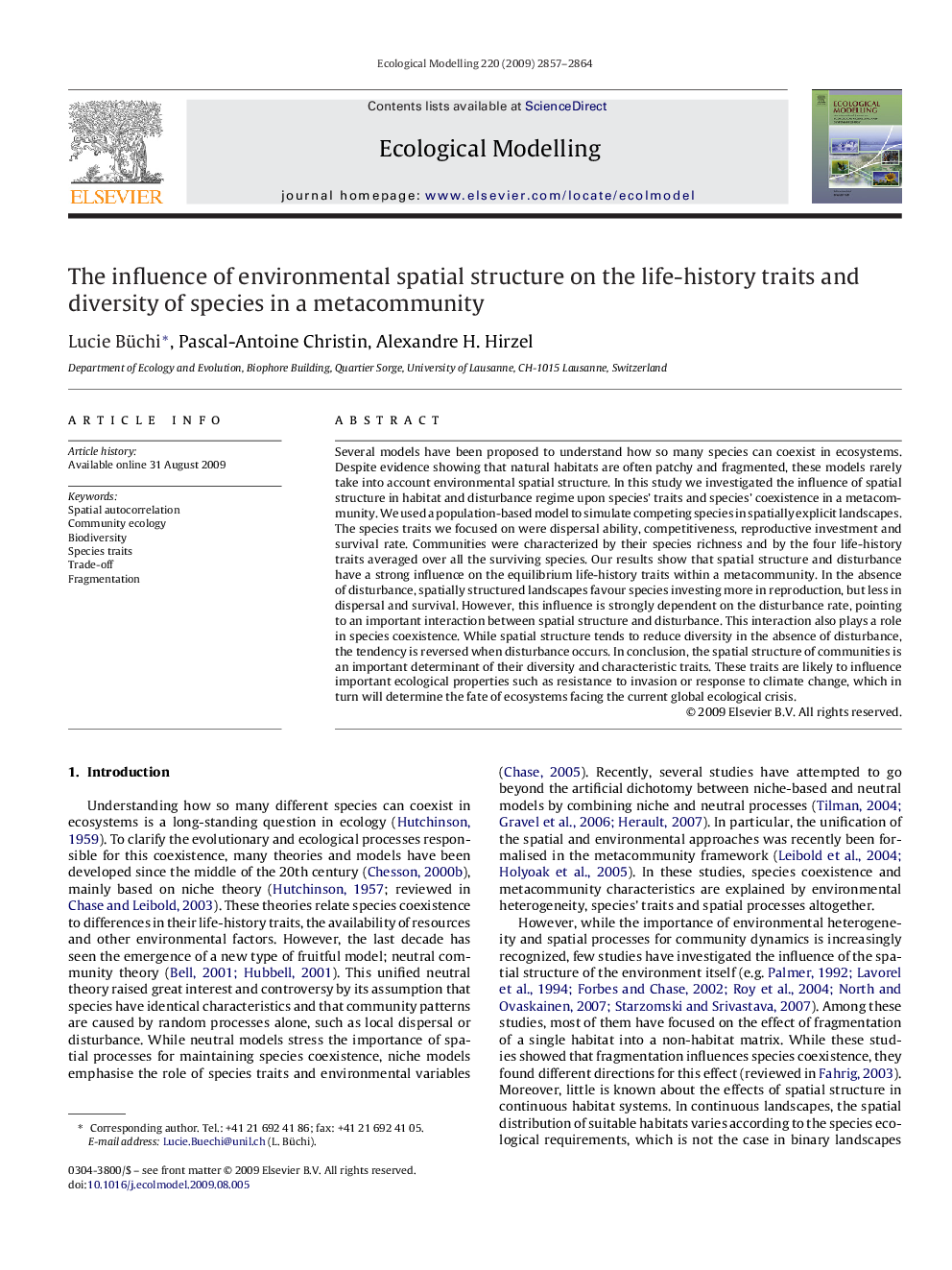| Article ID | Journal | Published Year | Pages | File Type |
|---|---|---|---|---|
| 4377628 | Ecological Modelling | 2009 | 8 Pages |
Several models have been proposed to understand how so many species can coexist in ecosystems. Despite evidence showing that natural habitats are often patchy and fragmented, these models rarely take into account environmental spatial structure. In this study we investigated the influence of spatial structure in habitat and disturbance regime upon species’ traits and species’ coexistence in a metacommunity. We used a population-based model to simulate competing species in spatially explicit landscapes. The species traits we focused on were dispersal ability, competitiveness, reproductive investment and survival rate. Communities were characterized by their species richness and by the four life-history traits averaged over all the surviving species. Our results show that spatial structure and disturbance have a strong influence on the equilibrium life-history traits within a metacommunity. In the absence of disturbance, spatially structured landscapes favour species investing more in reproduction, but less in dispersal and survival. However, this influence is strongly dependent on the disturbance rate, pointing to an important interaction between spatial structure and disturbance. This interaction also plays a role in species coexistence. While spatial structure tends to reduce diversity in the absence of disturbance, the tendency is reversed when disturbance occurs. In conclusion, the spatial structure of communities is an important determinant of their diversity and characteristic traits. These traits are likely to influence important ecological properties such as resistance to invasion or response to climate change, which in turn will determine the fate of ecosystems facing the current global ecological crisis.
